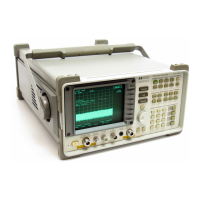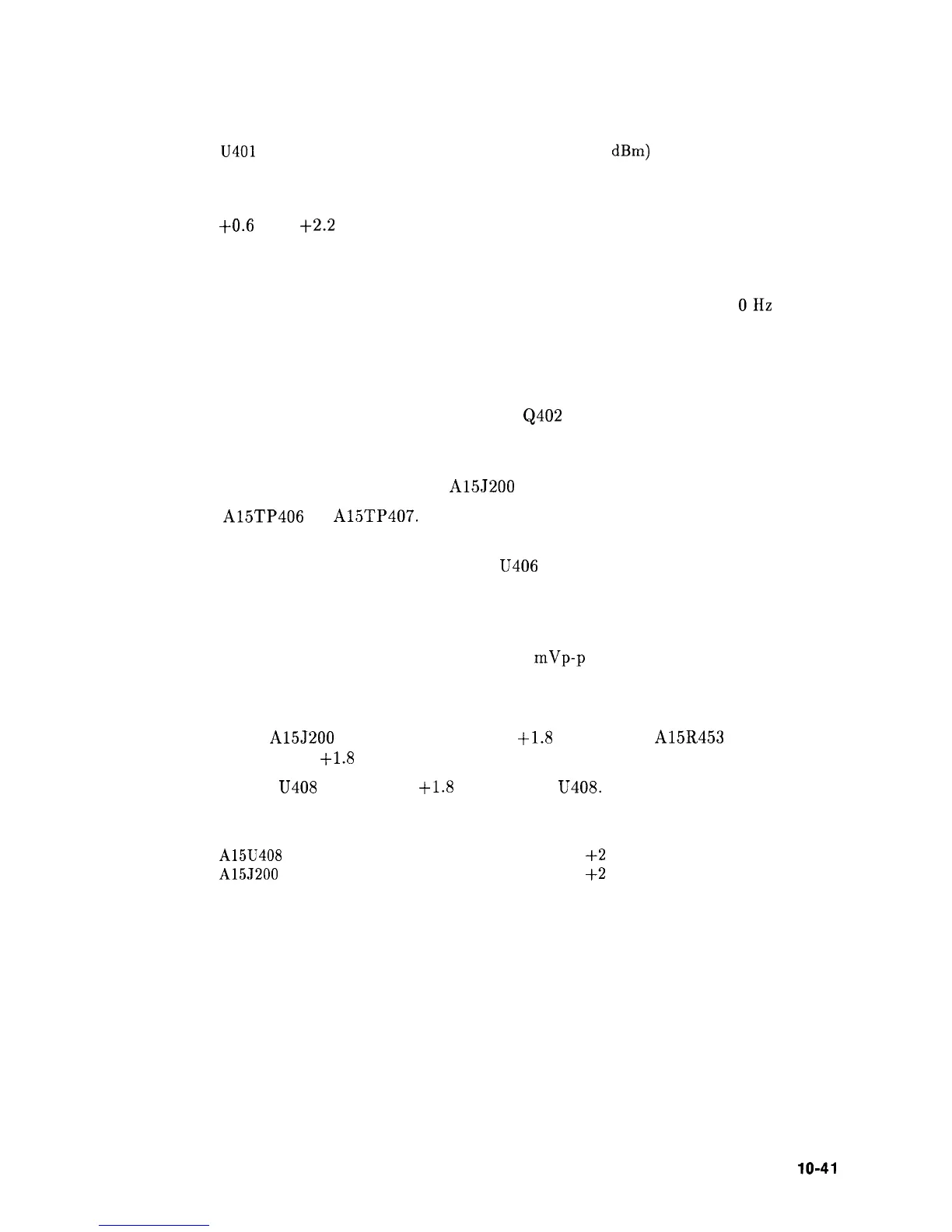14. Measure the loop-IF signal at the input to the IF Amp./Limiter (function block AK):
U401 pin 2 20 MHz (approximately -6
dBm)
15. Confirm the presence of a 20 MHz square-wave signal at TP405. The square wave should
go from
+0.6
V to
+2.2
V.
16. Set HP 8560A to the following settings:
CENTER FREQ . . . . . . . . . . . . . . . . . . . . . . . . . . . . . . . . . . . . . . . . . . . . 369.3 MHz
SPAN . . . . . . . . . . . . . . . . . . . . . . . . . . . . . . . . . . . . . . . . . . . . . . . . . . . . . . . . . . . OHz
17. Use an oscilloscope to confirm the presence of a 2.5 MHz TTL-level signal at TP406.
18. Confirm the presence of a 2.5 MHz TTL-level signal at TP407.
19. Force the loop’s phase/frequency detector to a lock condition by unsoldering one end
of R436. Resistor R436 is located at the base of
Q402
in function block AK of Al5 RF
Schematic (sheet 3 of 3). Th
is
opens the path between the Sampling Oscillator and the
phase/frequency detector.
20. If the dc power supply is connected to A15J200 pin 16, disconnect the power supply.
21. Connect A15TP406 to
A15TP407.
This forces both phase/frequency detector inputs to
the same 2.5 MHz signal.
22. Observe the phase/frequency detector outputs,
U406
pins 5 and 8, with an oscilloscope.
Narrow TTL pulses should be present. Pin 5 is normally low, pulsing high, and pin 8 is
normally high, pulsing low.
23. Check the cathode of CR401 with an oscilloscope. With the oscilloscope’s input
ac-coupled, a sawtooth waveform approximately 5
mVp-p
should be present.
24. Short C441 with a wire jumper.
This changes loop integrator into a voltage follower.
Refer to function block AB of Al5 RF Schematic (sheet 3 of 3).
25. The voltage at A15J200 pin 15 should measure
+1.8
Vdc. Adjust A15R453 PHASE DET
BIAS if necessary for
+1.8
Vdc.
26. If the voltage at
U408
pin 2 is not
+1.8
Vdc, suspect U408.
27. Check the voltages at the following points:
A15U408
pin 6
A15J200
pin 16
+2 Vdc (approximately)
+2 Vdc (approximately)
28. Remove the jumpers.
Synthesizer Section
lo-41

